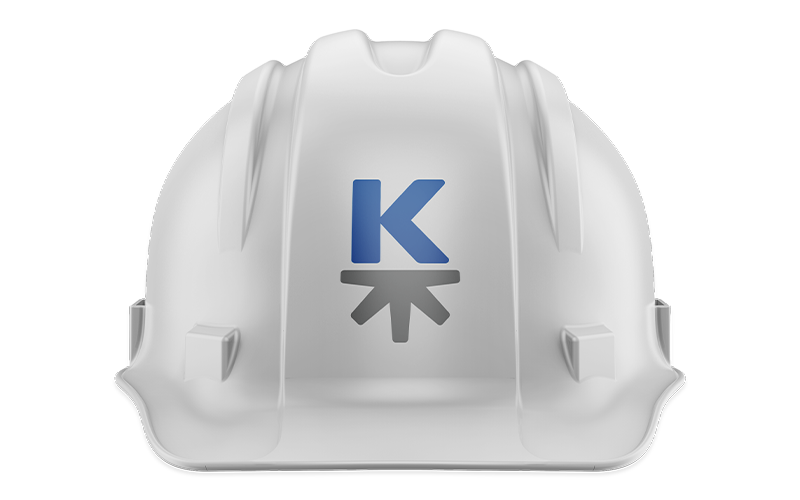Planning Your Website Design Budget: 11 Considerations You Need to Make

Developing a website that meets your goals isn’t easy. Meeting the demands of buyers and staying ahead of your competition is even harder. Before you design a single pixel or write one line of code, here are 11 considerations you need to make when planning your website design budget.
1) Project Ownership
Your website is central to the success of your business. It should be easy for your marketing team to update content, carry out campaigns, and communicate with customers.
IT owns the online security, web software, and hosting decisions made early in the project. Marketing owns everything related to website design, usability, content, and communication.
There are times when the two interests will overlap. Have a plan in place for when that happens.
2) Strategy
Before you begin working on the details, outline the purpose of your website. This is when you will take the time to consider what people will get out of visiting your site.
Begin with a questionnaire or a discovery meeting. Define the project goals and site objectives at the onset to set you and your digital agency up for success.
During this meeting, you should discuss the following questions:
- Who are the users of your website, and what do they care about?
- What are your competitors doing online? What's working for them and what isn't?
- What do you want your website do? What do your end users need the site to do?
- How will you manage your website content? Do you want to manage it? Do you want your agency to manage it?
- What factors will signify the project is a success?
Write down the answers to these questions and give a copy to everybody working on the project.
See our Website Questionnaire.
3) Branding
Has it been a while since you’ve taken a close look at how your company presents itself? If so, then it’s likely new factors have come to light since you first established your brand.
Even though an overhaul of your messaging and visuals could push the project out, now is the right time if:
- you’ve outgrown your current branding and it's looking outdated,
- you’re venturing into new markets and want to connect with new customers,
- you’re failing to differentiate yourself from your competition, or
- your business model or strategy has changed.
The branding you establish for your business will guide the design of your website. Let people know you mean business. Connect the dots across all your marketing efforts, digital as well as traditional.
4) Content Site Map
Now that you know what you want your site to do, how will it be organized?
Today’s buyers are looking for detailed information that is easy to find and answers their questions. Don't turn potential clients away from your site by making your navigation complicated.
Think of your site map as a table of contents, an outline of the pages on your website. Include pages that will be live when your website launches and also future pages. This helps your developer structure your content and create a user-friendly, easy-to-navigate experience.
5) Content Development
As you are working on the site design, you should also be working on your content. This phase of a web project is time-consuming and often underestimated, but it is critical to the success of your website.
Copy—Just like your website design follows visual branding guidelines, your web copy should have guidelines as well. Before you begin copywriting, define your brand's voice. Is it calm and nurturing; energized and empowering; or serious and businesslike? Doing this ahead of time makes it easier for different people to write content in the future.
After you've defined your voice, begin writing copy for the pages in your site map. This can be overwhelming and you may want to hire a professional copywriter to help you.
Commercial Photography—Quality photography is critical to a quality website. Your website will fall flat and seem amateurish if you use low-quality images or rely too heavily on stock photography. If you can, have an experienced commercial photographer take photos for you.
Video—Video can tell stories in a captivating way that static text and images can't reproduce.
Examples of how to use video on your website include:
- Explainer Videos: Explain who you are and what you do in 2 minutes or less
- Virtual Tours: Let visitors see what your physical location is like
- Product Videos: Show people using your products and services
- Educational Videos: In-depth information related to your industry
- Testimonial Videos: Customers talking about their experience with your business
Content that Educates—Think about a problem you wanted to solve. Did you turn to the internet for an answer? Ebooks, how-to articles, and white papers prove to your website visitors that you understand their problems and can help them.
6) Design
This phase usually begins with wireframing your content site map. With a wireframe, you get to experience the layout, navigation, and usability before design begins. This gives you a clear picture of how your website will work without getting distracted by the way it looks.
After you approve the wireframe, visual design begins. This is when the website really starts to take shape.
7) Development
Development costs can vary a lot depending on what you want your website to do. It's important not to make assumptions about costs without talking to your web agency first. Things that seem simple on the surface may not be simple at all.
Nerd alert warning! This next part gets into technical stuff that may sound like a bunch of mumbo jumbo, it will be over quick I promise.
Some developers use open source software like Joomla or Wordpress to build websites. Others use proprietary systems they've developed in house. There are benefits and drawbacks to both.
Open Source
Benefits:
- Software is free
- Supported by a community of developers
- Completely customizable
Drawbacks:
- Targeted by hackers
- Can be difficult to find good open source developers
- Risk of open source project being abandoned
Proprietary Software
Benefits:
- Developed to meet your specific needs
- You own the software
- Personalized support
Drawbacks:
- Can be significantly more expensive compared to open source
- Contracts are often required
- You are 100% dependent on your developer staying in business
Both open source and proprietary software will allow you to integrate third-party tools into your website. Incorporating proven technology can be a great way to save on costs. Some examples are payment processing services like PayPal; ecommerce platforms like WooCommerce, and email marketing software like MailChimp.
When you're putting together your budget, reach out to your website partner early. They will help you assess the size and scope of the development efforts you'll need.
8) Analytics Dashboard
A marketing analytics dashboard will help you tell if your website is meeting your goals.
Google Analytics, a free service, provides you with a lot of data–which can be overwhelming. It's a great tool but takes a lot of time to learn. The conversion funnel reporting is great if you have an ecommerce website. The reporting is not so great if you want to track form submissions or downloads as conversions. To get that information, you will have to combine Google Analytics with other tools.
I have yet to find an analytics gizmo that provides a complete picture out of the box. The best option is to build a custom dashboard that includes website, marketing, and sales data in one place. Keep these reports together so it's easy to see how your website and marketing affects your bottom line.
9) Managed Hosting and Technical Support
You'll have ongoing costs for hosting, website security, and other recurring site fees. If your company has an internal IT department then you may want to handle these services in house. If you do not have an IT staff then we recommend working with a company that offers managed web services.
It’s also important to have ongoing support in place if something goes wrong. Your web agency should be able to give you an annual total cost for these fees so you can plan for them.
10) Digital Marketing and Advertising
Now that your website is online, it is time to put it to work. At the time of your website launch, we recommend having at least one automated marketing campaign in place.
Include a plan for promoting and advertising through digital and traditional channels. Your advertising should point to a page on your website that encourages people to take an action like contacting you.
When somebody does contact you, have a procedure in place. Write a series of emails and send them out over time–use a third-party application to automate this. For in-person meetings, adapt the content on your website into a sales presentation.
11) Ongoing Updates
As your business grows, your needs and those of your customers will evolve. To meet this challenge, include ongoing updates in your budget.
Here are a few ways you can keep your website content up to date:
- Keep a blog and write new articles weekly–great for SEO!
- Keep your projects portfolio current by adding new ones and removing old ones
- Promote different aspects of your business using native advertising
- Optimize your web pages for conversions by testing out new ideas and keeping the winners
- When you have offline promotions create content on your website to support it
Conclusion
Creating a professional website is hard work. It requires know-how, craftsmanship, and expertise in a wide range of disciplines. It is a long process that starts with a great deal of careful consideration.
If you would like to take the guesswork out of your marketing decisions and get an immediate competitive advantage, grab a copy of our free Strategic Marketing Ebook.
If you are interested in learning more about our approach to the items discussed in this article, call (970) 744-3611 or send us an email so we can talk about what that would look like.


